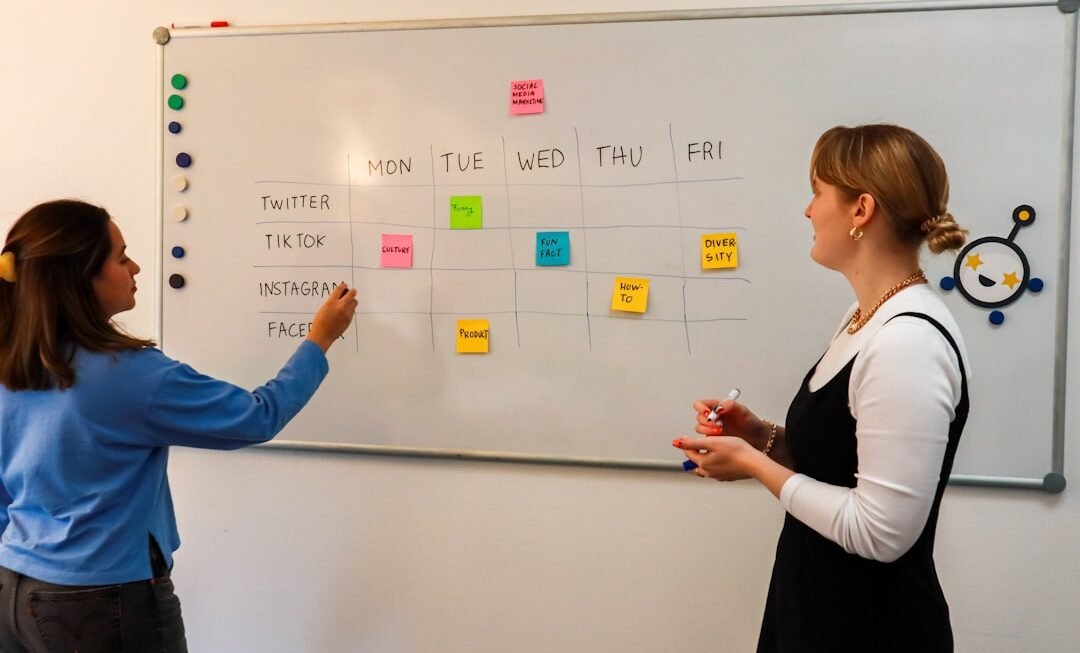The rapid proliferation of mobile devices has transformed the landscape of online education, making learning more accessible than ever before. With smartphones and tablets becoming ubiquitous, educational institutions are increasingly recognizing the need to optimize their online platforms for mobile use. Mobile accessibility refers to the design and development of educational content that can be easily accessed and navigated on mobile devices, ensuring that all learners, regardless of their circumstances, can engage with the material effectively.
This shift towards mobile-friendly education is not merely a trend; it reflects a fundamental change in how students interact with learning resources. As more learners rely on mobile devices for their educational needs, the importance of mobile accessibility cannot be overstated. It encompasses a range of considerations, from the technical aspects of website design to the pedagogical strategies employed in course delivery.
The goal is to create an inclusive learning environment that accommodates diverse user needs, including those with disabilities. By prioritizing mobile accessibility, educational institutions can enhance student engagement, improve retention rates, and ultimately foster a more equitable learning experience for all.
Understanding the Challenges of Mobile Accessibility
Despite the clear benefits of mobile accessibility, several challenges persist that hinder its effective implementation in online education. One significant issue is the variability in screen sizes and resolutions across different mobile devices. A website or application that looks great on a desktop may not translate well to a smaller screen, leading to a frustrating user experience.
This inconsistency can result in difficulties with navigation, readability, and interaction, ultimately discouraging students from engaging with the content. Another challenge lies in the diverse range of operating systems and browsers that mobile users employ. Each platform may render web content differently, which can lead to compatibility issues.
For instance, a feature that works seamlessly on iOS may not function as intended on Android devices. This fragmentation necessitates rigorous testing and optimization to ensure that all users have a consistent experience, regardless of their device or operating system. Additionally, educators must consider the varying levels of digital literacy among students, as some may struggle with navigating mobile interfaces or utilizing specific features.
Implementing Responsive Design for Mobile Accessibility
Responsive design is a critical approach to ensuring mobile accessibility in online education. This design philosophy emphasizes the creation of web content that adapts seamlessly to different screen sizes and orientations. By employing fluid grids, flexible images, and media queries, developers can create a single website that provides an optimal viewing experience across a wide range of devices.
This eliminates the need for separate mobile versions of websites, streamlining maintenance and updates. Implementing responsive design not only enhances usability but also improves search engine optimization (SEO). Search engines favor mobile-friendly websites, which can lead to higher visibility and increased traffic.
For educational institutions, this means that prospective students are more likely to discover their offerings when searching for online courses or resources. Furthermore, responsive design can facilitate better engagement by allowing students to access course materials anytime and anywhere, thus supporting a more flexible learning environment.
Creating Accessible Content for Mobile Devices
Creating accessible content for mobile devices involves more than just ensuring that text is legible on smaller screens; it requires a comprehensive approach to content development that considers various accessibility standards and guidelines. The Web Content Accessibility Guidelines (WCAG) provide a framework for creating content that is perceivable, operable, understandable, and robust for all users. This includes using appropriate color contrasts, providing alternative text for images, and ensuring that multimedia elements are captioned or transcribed.
In addition to adhering to these guidelines, educators should also focus on structuring content in a way that enhances comprehension on mobile devices. This might involve breaking up large blocks of text into smaller paragraphs, using bullet points for clarity, and incorporating headings to facilitate navigation. Interactive elements such as quizzes or discussion forums should be designed with touch interfaces in mind, ensuring that they are easy to use on mobile screens.
By prioritizing accessible content creation, educators can foster an inclusive learning environment that accommodates diverse learner needs.
Utilizing Assistive Technologies for Mobile Accessibility
Assistive technologies play a vital role in enhancing mobile accessibility for students with disabilities. These tools can range from screen readers that convert text into speech to speech recognition software that allows users to navigate their devices through voice commands. For instance, Apple’s VoiceOver and Android’s TalkBack are built-in screen readers that enable visually impaired users to interact with mobile applications effectively.
Moreover, educational content should be designed with compatibility in mind for various assistive technologies. This includes ensuring that all interactive elements are keyboard-navigable and that multimedia content is accessible through captions or transcripts.
By considering the needs of students who rely on assistive technologies during the design phase, educators can create a more inclusive learning experience that empowers all learners to succeed.
Addressing Navigation and User Interface Challenges
Effective navigation is crucial for mobile accessibility in online education.
Mobile users often prefer simple and intuitive navigation structures that allow them to find information quickly without unnecessary clicks or scrolling.
This can be achieved by employing clear labeling for menus and buttons, as well as providing a consistent layout throughout the platform. Additionally, educators should consider implementing features such as search functionality and breadcrumb navigation to enhance user experience further. These tools enable students to locate specific content efficiently and understand their position within the course structure.
Furthermore, incorporating feedback mechanisms allows users to report navigation issues or suggest improvements, fostering a collaborative approach to refining the user interface over time.
Ensuring Compatibility with Different Mobile Devices and Operating Systems
The diversity of mobile devices and operating systems presents a significant challenge for ensuring accessibility in online education. With numerous manufacturers producing smartphones and tablets running various versions of iOS and Android, developers must prioritize cross-platform compatibility during the design process. This involves rigorous testing across multiple devices to identify any discrepancies in functionality or appearance.
To address these compatibility issues effectively, educational institutions should adopt progressive enhancement strategies. This approach focuses on building a solid foundation of core functionality that works across all devices while adding advanced features for those with more capable hardware or software. By prioritizing compatibility from the outset, educators can ensure that their online platforms are accessible to the widest possible audience.
Providing Support for Different Learning Styles and Abilities
Recognizing the diversity of learning styles and abilities among students is essential for creating an inclusive online education environment. Mobile accessibility should accommodate various preferences, such as visual, auditory, and kinesthetic learning styles. For instance, incorporating multimedia elements like videos and podcasts can cater to auditory learners while providing visual aids such as infographics or diagrams can support visual learners.
Additionally, offering multiple formats for course materials—such as text-based documents alongside audio recordings—can help meet the needs of students with different abilities or preferences. For example, students with dyslexia may benefit from audio versions of texts, while those who are more comfortable with written content may prefer traditional reading materials. By providing diverse resources and formats, educators can create a more engaging learning experience that resonates with all students.
Incorporating Feedback and Testing for Mobile Accessibility
Continuous improvement is vital for ensuring effective mobile accessibility in online education. Gathering feedback from students about their experiences using mobile platforms can provide valuable insights into areas needing enhancement. Surveys, focus groups, and usability testing sessions can help identify specific challenges faced by learners when accessing course materials on their devices.
Incorporating this feedback into the design process allows educators to make informed decisions about necessary adjustments or improvements. Regular testing of mobile platforms is also essential to ensure ongoing compatibility with new devices and operating system updates. By adopting an iterative approach to development—where feedback is consistently sought and acted upon—educators can create a dynamic learning environment that evolves alongside technological advancements.
Collaborating with Students and Educators for Mobile Accessibility Solutions
Collaboration between students and educators is crucial for developing effective mobile accessibility solutions in online education. Engaging learners in discussions about their experiences can provide insights into specific barriers they encounter when accessing course materials on mobile devices. This collaborative approach fosters a sense of ownership among students while empowering them to advocate for their needs.
Furthermore, involving educators in the design process ensures that instructional strategies align with accessibility goals. Professional development opportunities focused on mobile accessibility can equip educators with the knowledge and skills necessary to create inclusive learning environments. By working together—students sharing their experiences and educators applying best practices—educational institutions can develop comprehensive solutions that enhance mobile accessibility for all learners.
Advancing Mobile Accessibility in Online Education
Advancing mobile accessibility in online education is an ongoing journey that requires commitment from educational institutions, educators, and students alike. By understanding the challenges associated with mobile accessibility and implementing best practices such as responsive design, accessible content creation, and collaboration with learners, institutions can create inclusive environments that cater to diverse needs. As technology continues to evolve, so too must our approaches to education—ensuring that every student has the opportunity to succeed in an increasingly digital world.












